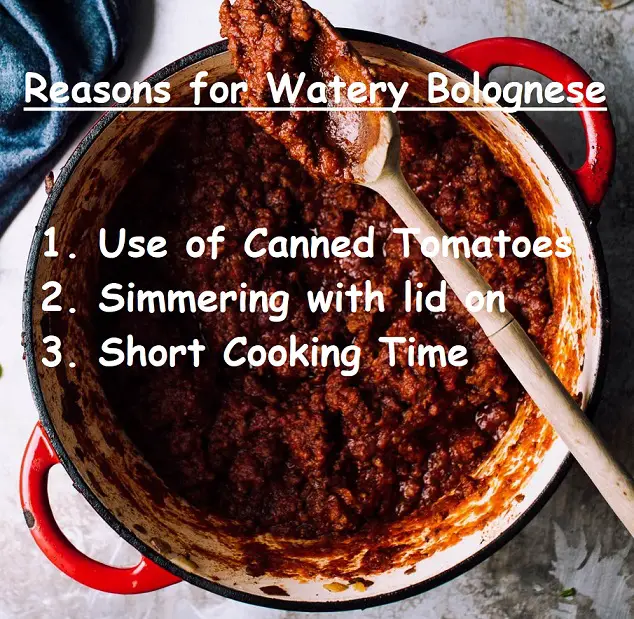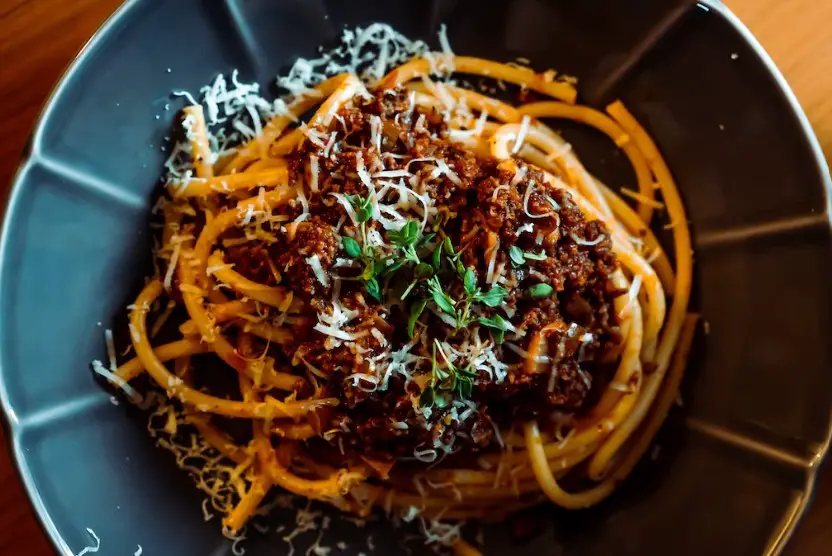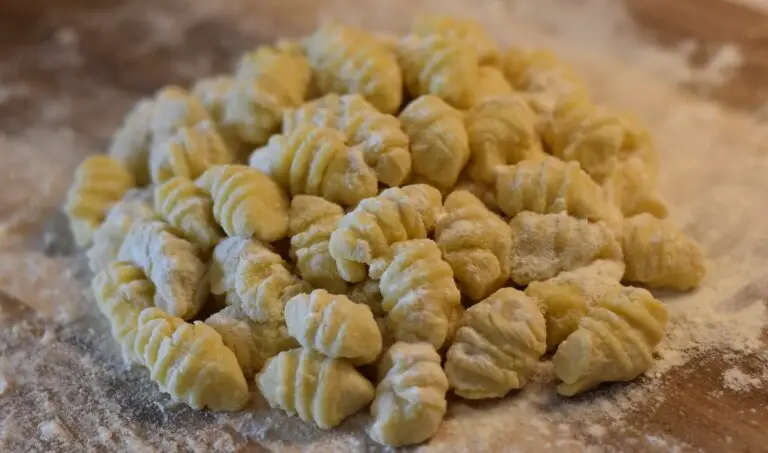There’s nothing quite like a comforting bowl of rich and hearty Bolognese sauce served over al dente pasta. The tantalizing aroma of simmering meat, vegetables, and tomatoes wafting through the kitchen is enough to make anyone’s mouth water.
The most common reason why your Bolognese is so watery is that you didn’t cook long enough for the water content in your sauce to evaporate.

Reasons for Watery Bolognese
The thin consistency of your Bolognese sauce can be attributed to several factors:
- Use of Canned Diced Tomatoes:
Canned diced tomatoes contain calcium chloride, which help hold the shape and keeps them firm. Even if you simmer them for a while, these diced tomatoes tend to hold their shape and not break down. - Cooking Technique:
Simmering the sauce with a lid on can trap steam and moisture, preventing evaporation. Proper reduction is key to achieving a thick consistency. - Short Cooking Time:
Bolognese is meant to be slow-cooked, allowing the flavors to meld and the sauce to thicken naturally. A short cooking time may result in a watery sauce.
How to Prevent Watery Bolognese
To rescue your Bolognese from its watery fate, follow these steps:
- Choose the Right Tomatoes:
Opt for canned crushed tomatoes, passata, or whole tomatoes that you can break down yourself. These varieties lack calcium chloride and will contribute to a smoother texture. - Sauté and Reduce:
Begin by sautéing your vegetables and browning your meat. This foundational step builds flavor. After adding tomatoes and liquids, simmer the sauce uncovered on low heat. Stir occasionally to prevent sticking and promote even reduction. - Longer Cooking Time:
Give your Bolognese the time it deserves. Aim for at least 2-3 hours of simmering to allow the flavors to meld and the sauce to thicken. Patience is your ally in achieving a rich consistency.
Tips for Achieving Thick and Savory Bolognese
- Tomato Paste:
Incorporate tomato paste early in the cooking process. Sauté it with your vegetables to intensify flavor and thicken the sauce. - Deglaze and Emulsify:
After browning the meat, deglaze the pan with wine or broth. This not only adds depth but also emulsifies the sauce, creating a smoother texture. - Sweat Vegetables:
Sauté your aromatics – onions, carrots, and celery – until soft and sweet before adding the meat. This step ensures the vegetables break down fully, contributing to the sauce’s thickness. - Uncovered Simmering:
Simmer the sauce without a lid, allowing moisture to evaporate and the sauce to thicken. Stir occasionally to prevent sticking. - Add Cream or Milk:
For a luxurious touch, add a splash of heavy cream or milk towards the end of cooking. This will impart a silky texture and add richness to the sauce.


